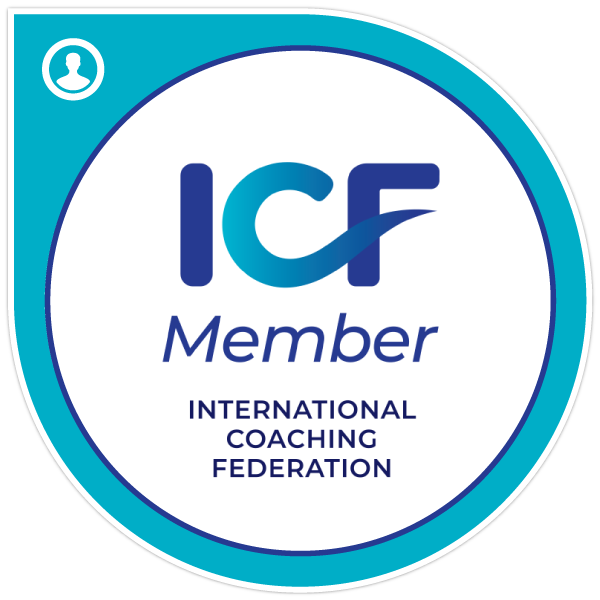Hiring Is Broken — Leadership Coaching Is the Missing Link
Rich Baron • October 28, 2025
How Leadership Coaching Turns Talent into Transformation
The Global Hiring Disconnect
In today’s interconnected world, companies can recruit from virtually anywhere. Technology has dissolved borders, and organizations boast about being “global talent magnets.” Yet, despite this unprecedented reach, the hiring process across industries and geographies remains deeply flawed.
Recruiters and hiring managers often lean too heavily on resumes, credentials, and automated screening systems. The result? Great leaders are filtered out because they don’t fit a pre-set template, while others get hired for what looks good on paper rather than what creates sustainable impact.
Too often, hiring decisions prioritize speed over substance and optics over authenticity. Companies fill roles quickly to meet quarterly targets, not to build long-term leadership pipelines. What’s missing is a deeper understanding of who a candidate really is — not just what they’ve done.
Culture Fit Has Become Culture Filter
For years, organizations have used the idea of “culture fit” as a benchmark for hiring — a way to ensure new leaders align with the company’s values and ways of working. But somewhere along the way, culture fit shifted from alignment to elimination.
Instead of inviting diversity of thought, culture fit often becomes a culture filter — screening out leaders who think differently, challenge norms, or bring new perspectives that could disrupt the familiar. This unintentional bias leads organizations to select leaders who simply “blend in,” reinforcing existing patterns and protecting comfort at the expense of growth.
When businesses repeatedly hire the same leadership profile — the same background, same behaviors, same personality — they create cultural stagnation. Innovation slows. Blind spots deepen. Progress plateaus. Meanwhile, the rapidly changing world outside demands new thinking and adaptive leadership more than ever.
True cultural alignment isn’t about finding people who are easy to manage or agreeable to the status quo — it’s about finding leaders who can elevate the culture, not preserve it.
Leaders who:
- Ask bold questions
- Bring diverse insights and experience
- Challenge outdated beliefs
- Strengthen inclusion, trust, and collaboration
- Expand the organization’s capacity to win in new markets
Culture should be dynamic, not static. A strategic, future-focused culture doesn’t filter differences — it leverages them.
When hiring shifts from “who fits us?” to “who grows us?” — that’s when culture becomes a competitive advantage.
Leadership Readiness Is Rarely Measured
Traditional hiring models focus on what a leader has done, not who they are. Job descriptions and interviews emphasize competencies, credentials, and past achievements — all important, yet insufficient. What often gets overlooked are the deeper human capacities that determine whether a leader can thrive in ambiguity, inspire others, and drive transformation.
True leadership effectiveness relies on attributes that rarely show up on a résumé or in a structured interview:
- Emotional intelligence — how they connect, influence, and build trust
- Resilience under pressure — how they respond when things go wrong
- Learning agility — whether they grow with the role or become overwhelmed by it
- Leadership maturity — the capacity to balance confidence with humility
- Courage and integrity — making the right decisions, not just the easy ones
These capabilities fuel sustainable success — yet they remain largely invisible in the hiring process.
The result? Organizations fill roles quickly but not always wisely. When leaders fail to adapt, perform, or align with culture, the organization pays the price. Research shows that replacing an unsuccessful executive can cost three to five times their annual salary — and that’s just the financial impact.
The greater ripple effects include:
- Loss of trust among employees and stakeholders
- High-performing team members disengaging or leaving
- Momentum stall on critical initiatives
- Confusion and instability in the culture
This isn’t a hiring problem — it’s a leadership readiness gap.
Executive coaching bridges that gap. It helps organizations look beyond today’s résumé to evaluate the capacity for future leadership — ensuring the leaders they select aren’t just equipped to take the job, but to elevate it.
How Executive Coaching Can Transform Hiring
Executive leadership coaching offers a corrective lens to this broken system — not by replacing hiring processes, but by elevating them. While most organizations treat leadership as a list of credentials or past achievements, coaching goes deeper. It uncovers potential — the capacity to lead with character, resilience, and emotional intelligence in the face of real-world challenges.
Coaching brings the whole leader into view:
- Their strengths and blind spots
- Their motivators and derailers
- How they build trust and influence
- What drives their decisions and behavior
- How they align with the culture they’re stepping into
Instead of hiring based on a résumé or a first impression, organizations gain a clearer understanding of how a leader will perform, connect, and transform their environment over time.
This shift replaces guesswork with insight.
It replaces hiring for the job with hiring for the future.
It creates leaders who are not only competent but culturally catalytic.
Executive coaching doesn’t just help select leaders — it develops them. It accelerates integration, strengthens culture, and ensures leaders don’t just enter a role, but elevate it. When coaching becomes part of the hiring equation, organizations don’t just fill positions. They build leadership capacity — and that’s where lasting success truly begins.
Leadership Assessment as Insight, Not Gatekeeping
In many organizations, leadership assessments are treated as binary tools — instruments that “pass” or “fail” candidates rather than reveal their depth, drivers, and development potential. This mindset turns valuable diagnostic tools into gatekeeping mechanisms that can block great talent instead of illuminating it.
A deeper problem lies in how these assessments are being interpreted. Many HR teams rely on internal staff who may not be certified or formally trained to interpret widely used hiring assessments such as DISC®, Myers-Briggs Type Indicator (MBTI®), Hogan Assessments, CliftonStrengths®, and similar behavioral or personality inventories. Without the right expertise, these tools are often misapplied or oversimplified — reduced to color labels, preference types, or quick-fit categories that seem helpful on the surface but lack the depth needed for high-stakes selection decisions.
This creates a false sense of confidence in the results. Leaders may be screened out because they don’t match a preferred profile, while others are advanced based on traits that look appealing in theory but don’t translate to real-world leadership effectiveness.
Worse, misinterpretation can introduce bias, unintended exclusion, and costly mis-hires — all while giving organizations the illusion of objectivity.
Assessments are powerful only when paired with trained interpretation, leadership context, and professional debriefs that explore:
- Why a leader behaves the way they do
- How they respond under stress or change
- What motivates their decisions
- Where their blind spots or derailers exist
- How they will influence culture and performance
It’s particularly important when using powerful leadership assessments such as the Mattone Leadership Enneagram Inventory (MLEI)
— instruments designed to reveal core leadership drivers, emotional composition, and patterns that impact performance from the inside out.
When used correctly, these tools don’t categorize leaders — they unlock insights that drive better hiring and smarter development.
Executive coaches ensure assessments don’t become gatekeepers to opportunity, but gateways to growth — for both the leader and the organization.
From Hiring to High Performance
Hiring a leader shouldn’t be the finish line — it should be the launchpad for lasting success. Executive coaching ensures that organizations don’t simply bring leaders into a role, but set them up to amplify performance, trust, and culture from day one.
Coaching supports leaders in navigating the nuances of global cultural intelligence — not just understanding new environments, but learning how to influence, communicate, and build trust across diverse teams and markets. A leader who excels in New York may struggle in São Paulo or Singapore if they don’t understand the underlying cultural dynamics. Coaching equips them to adapt without compromising authenticity — turning cultural differences into strategic strengths.
The impact is especially powerful during the first 90 days, when alignment, credibility, and relationships are either accelerated or jeopardized. Instead of a traditional orientation, coaching creates an integration and acceleration plan that helps leaders connect their vision to the organization’s strategic priorities and people faster — and with greater confidence.
Beyond the individual level, coaching enables leadership teams to move from reactive hiring to proactive talent strategy. It helps organizations build a pipeline of future-ready leaders — expanding leadership capacity ahead of demand rather than scrambling to fill gaps when they arise.
In this way, executive coaching does more than enhance hiring outcomes. It elevates the entire leadership ecosystem — transforming new hires into cultural catalysts and ensuring every leadership decision builds capability for tomorrow, not just coverage for today.
A Message to Leaders Seeking Development
If you’re a leader looking to advance your career, the flaws in the hiring process can feel discouraging — but they don’t have to define your path. The key is shifting focus from getting hired to becoming undeniable.
Executive coaching helps you do exactly that. It sharpens self-awareness, strengthens emotional intelligence, and aligns your leadership identity with your purpose. More importantly, it helps you understand how others experience you — and how to authentically communicate your value in any context or culture.
Through assessments, reflective dialogue, and targeted development plans, you begin to lead from your core, not your credentials. You learn how to show up not just as a qualified candidate, but as a transformational leader — someone who can elevate people, performance, and culture wherever you go.
A New Paradigm: Hiring for Leadership Potential
The future of global hiring depends on more than algorithms or credentials. It depends on the ability to recognize and develop human potential. Executive coaching brings the science of leadership and the art of transformation together — ensuring organizations don’t just hire leaders, but grow them.
In a world where every company claims to be talent-driven, the differentiator isn’t how you hire — it’s how you develop who you hire.
About the Author
Rich Baron is the Chief Operating Officer and Director of Global Coaching Projects at John Mattone Global (JMG), where he also serves as a Master Certified Intelligent Leadership Executive Coach. With more than 30 years of experience in cultural transformation, operational leadership, and executive development, Rich has a proven track record of helping leaders at every level — from emerging talents to seasoned CEOs — unlock their potential and build high-performance cultures.
Rich is also the co-host of Mainline Executive Coaching ACT, recognized by FeedSpot as one of the top executive coaching podcasts worldwide. The show’s recognition is based on global rankings across web traffic, social media influence, and audience engagement, reflecting its growing impact on leaders and organizations around the world.




